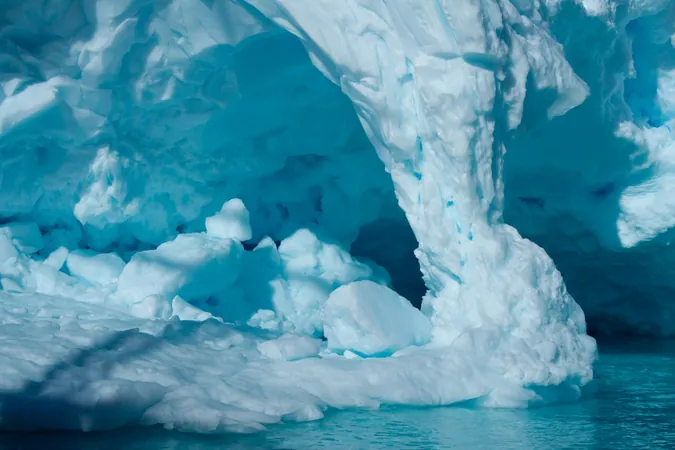
Shocking New Findings on Antarctic Ice Loss Could Change Everything We Know About Climate Change!
2025-01-09
Author: Daniel
Recent research has unveiled unexpected trends in the calving events occurring in Antarctica, challenging our long-held beliefs about how climate change affects ice loss. A groundbreaking study published in *Geophysical Research Letters* scrutinized ice shelf data from 1976 to 2023, and its findings may significantly alter our understanding of the impact of rising global temperatures.
While global temperatures have indeed climbed, researchers found that the average size of the largest icebergs formed in Antarctica has actually decreased slightly over the years. This revelation contradicts the common assumption that massive iceberg formation is a direct consequence of warming temperatures. By analyzing nearly five decades worth of satellite data, the study focused on the biggest iceberg created each year, some of which have reached staggering sizes of up to 11,000 square kilometers.
Smaller Calving Events: The Hidden Culprits of Ice Loss
Instead of large icebergs like the infamous A-68, which broke free in 2017 and was comparable in size to Delaware, the study suggests that it’s the smaller, more frequent calving events that are primarily responsible for the ongoing ice loss in Antarctica. This phenomenon, often described as “death by a thousand cuts,” disrupts the integrity of ice shelves, making it more difficult for large icebergs to form. Such findings radically shift the narrative away from glamorous giant icebergs as primary indicators of climate impacts.
For organizations involved in Antarctic monitoring and maritime safety, these insights call for a significant reassessment of monitoring strategies. Prioritizing the cumulative effects of the smaller calving events may be essential to understanding the true dynamics at play in Antarctic ice loss.
Don't Let Your Guard Down: Extreme Calving Events Still Loom
Despite the trend towards smaller ice formations, the research warns that we should not become complacent. Models indicate that the possibility of an extreme calving event—something akin to a rare “once in a century” iceberg, potentially the size of Switzerland (around 38,827 square kilometers)—remains a credible threat. This underlines the necessity for enhanced ice shelf monitoring systems and well-thought-out emergency response protocols.
The Broader Implications for Antarctic Operations
As organizations continue to conduct research or operations in Antarctic waters, they must adapt their strategies in light of these new findings. It is crucial that climate science initiatives factor in both the large-scale effects and the incremental changes occurring across ice shelves.
With climate change including unpredictable twists and turns, stakeholders in the region need to ensure that their practices promote sustainability and safety in response to both gradual ice loss and the potential for more dramatic calving events. This shift in understanding could revolutionize how we perceive climate impacts in one of Earth's most vital regions!
Stay tuned for more revelations as researchers continue to uncover the truth behind Antarctica’s ice dynamics!

 Brasil (PT)
Brasil (PT)
 Canada (EN)
Canada (EN)
 Chile (ES)
Chile (ES)
 Česko (CS)
Česko (CS)
 대한민국 (KO)
대한민국 (KO)
 España (ES)
España (ES)
 France (FR)
France (FR)
 Hong Kong (EN)
Hong Kong (EN)
 Italia (IT)
Italia (IT)
 日本 (JA)
日本 (JA)
 Magyarország (HU)
Magyarország (HU)
 Norge (NO)
Norge (NO)
 Polska (PL)
Polska (PL)
 Schweiz (DE)
Schweiz (DE)
 Singapore (EN)
Singapore (EN)
 Sverige (SV)
Sverige (SV)
 Suomi (FI)
Suomi (FI)
 Türkiye (TR)
Türkiye (TR)
 الإمارات العربية المتحدة (AR)
الإمارات العربية المتحدة (AR)